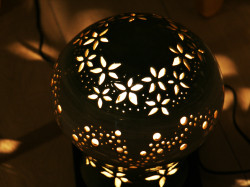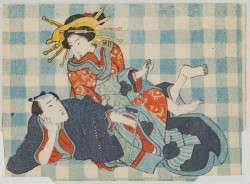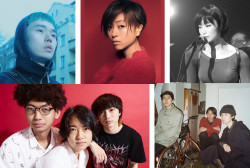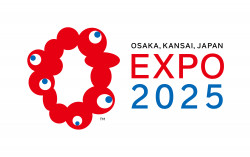
Originally published on metropolis.co.jp on August 2012

Style File
All martial arts offer general fitness and self-defence, while at the same time helping to improve your confidence, reflexes, coordination, discipline and balance. There are, however, some unique aspects which differentiate one style from another.
» Kickboxing—Cardio-intensive, increase stamina and strength, reduce weight and stress
» Aikido—Strong defensive skills, no striking, doesn’t require much of your own strength, emphasis on controlling opponent’s energy
» Brazilian jiu jitsu—Strong ground defensive and offensive skills, submission focused, no striking, dominate a larger opponent
» Karate—Emphasis on mental training, strong offensive skills, stress relief, weight loss
» MMA—Learn a variety of different styles, improve endurance, increase strength, lose weight, ground and standing skills
find your way
Some of the many…
» AACC various locations (kickboxing/MMA/jiu jitsu)
» Aikido Renshinkai various locations (aikido)
» Crosspoint Kichijoji/Scramble Shibuya (kickboxing/MMA/jiu jitsu)
» Grabaka Nakano (kickboxing/MMA/jiu jitsu/wrestling/judo)
» Hide’s Kick Shinjuku (kickboxing/MMA/jiu jitsu/wrestling)
» Purebred Saitama (jiu jitsu)
» Trusting Gym Nakano-Shimbashi (kickboxing)
» Tri-Force Aoyama (jiu jitsu)
» Yoshida Dojo various locations (judo)
Why work out in a building full of torturous machines alongside fitness freaks comparing triceps and how much they paid for their Lycra bodysuits? You can do the same thing anywhere in the world. Japan is peppered with far more interesting places to get in shape, namely martial-arts dojo—training spaces for a number of different fighting, self-defence and self-improvement disciplines, many of which were invented here.
Doubters might be wary of the language barrier on one hand, and the thought of puritanical obsessives frowning on beginners on the other. But plenty of dojo around the metropolis are happy to welcome foreigners into their midst, and most are surprisingly relaxed about levels of ability and speed of development.
If you prefer to eschew the bodybuilding gyms and get fighting fit in a more traditional way, Metropolis offers a simple low-down on some of the options available—plus Q&As with two instructors. This is by no means an in-depth exploration, but a way in for the uninitiated. See further links for more info.
Karate, judo, aikido and kickboxing all originated in Japan—while Brazilian jiu jitsu and MMA (mixed martial arts) have also become very popular here in recent years. It’s all here for the taking—the only problem you might have is knowing which martial art form to choose [see Style File].
One important factor in choosing is clicking with the sensei—if you’re not in tune with the sensei’s style, you won’t get the best from your training. Fortunately many dojo have excellent teachers who give Yoda a run for the money in helping you unlock body and mind.
Tsutomu Chida is one such person. A protégé of the late Gozo Shioda-sensei (founder of the Yoshinkan aikido style), Chida teaches people of all ages and backgrounds at his head dojo in Nihombashi. “Our students range from six to eighty-four years old, with a healthy mix of genders as well as non-Japanese people,” he says.
Limbering up in a dojo can be a handy way to meet people and improve your Japanese ability, too. “I often like to gather my students for parties so they can get to know each other better and build a sense of community,” says former kickboxing champion, Californian Kazushi Nishida.
There are some English-speaking dojo dotted in and around the Tokyo area, and some which offer international classes in English, often led by a non-Japanese instructor. But it’s recommended to join a normal class in Japanese. Instructors can sometimes sling in a bit of English—if you’re confusing your migi (right) with your hidari (left)—but you’ll quickly pick up enough language to get by, especially as most of the communication is visual.
Moneywise, the cost-effectiveness is similar to that of a gym—the more you take advantage of it, the better. Typically, there’s an initial sign-up fee of around ¥10,000, and then around another ¥10,000 per month. Several dojo allow unlimited access—three sessions a week at ¥10,000 a month would mean a per-session cost of ¥835, for example. But you probably won’t be able to last more than two hours of intense training at first.
Sparring plays a big role in martial arts training, yet it can be the biggest concern for potential students. The aim is not to hurt your opponent but rather to test and hone your skills in a practical situation. Kickboxers, for example, are covered from head to toe in safety gear to assure minimal risk of injury. Your trainer will always remind you to never strike with full force and will have his eyes on the participants at all times. Only the more experienced students are allowed to participate.
If that still doesn’t satisfy you, aikido might be the option of choice, since it involves no competition whatsoever—except with a training dummy, that shouldn’t pose too much of a problem.
Nevertheless, sparring remains one of the most enjoyable aspects of martial-arts training for many, and can be a great confidence booster. When you manage to stay off the mat.
TSUTOMU CHIDA

Chief instructor of Aikido Renshinkai
» Top student of Gozo Shioda, the founder of Yoshinkan aikido
» Former instructor for Tokyo Metropolitan Police Academy
» 8th dan black belt with 40+ years experience
Why should people choose aikido over other martial arts?
Aikido teaches you to be sensitive to you opponent’s power. By doing that you can be aware of the power and blend with it rather than against it. By doing so, a smaller and weaker person can use aikido effectively even when confronted by a larger and more powerful attacker. This can be translated to our everyday life as well. By being sensitive to our surroundings we can live a more harmonious life.
What can aikido do for you?
It teaches you to separate your mind and body so they become two entirely different entities. For example, we learn to push our energy and mind toward somebody while at the same time stepping back. In other words, we are physically moving backward, but our energy and intentions are moving forward.
What kinds of people come to your dojo?
Our students range from six to eighty-four years old. An experienced instructor at my dojo has been training with me since he was eight.
Do you organize any activities outside of your classes?
Every year we organize a demonstration event called embu taikai which usually takes place in early autumn (this year on September 15). Here people from all over Japan (as well as foreign countries) come to watch me and other instructors perform demonstrations. We also have an annual three-day summer camp, or gasshuku, that follows the embu takai.
NISHIDA KAZUSHI

Kickboxing champion
» Record: Ten wins (6 KO), five loses in five professional fights
» Heavyweight champion both in Japan and California
Why should people choose kickboxing? It’s a great way to kill stress. We hit punching bags and pads, which you can’t do in many other traditional martial arts. Kickboxing also utilizes great techniques and methods for self defense purposes. It can be tough at first for beginners, but that is true for any kind of sport. The sport can do wonders for your self-confidence and general fitness too.
What would you say to someone who isn’t sure about starting kickboxing?
At first you should take it easy and not worry about getting hurt because you won’t be sparring until you are more experienced and confident. Just come with determination and you will see yourself improve little by little. I don’t like to push people, so I always go at my students’ pace.
What goals do students tend to have?
Everyone has their own personal goals, of course. For example, my oldest student’s goal was to participate in amateur fights. He achieved that goal but continues to improve and never slows down! Sometimes I get parents asking me to train their children. Not so they can fight back, but to be more confident and able to defend themselves if need be. Some ladies want to get into shape as kickboxing is cardio-intensive and works on strengthening and toning major muscle groups. The one thing all my students have in common is a new-found confidence as they pursue their goals. Although kickboxing is good for all ages, it’s very well suited for adults.







